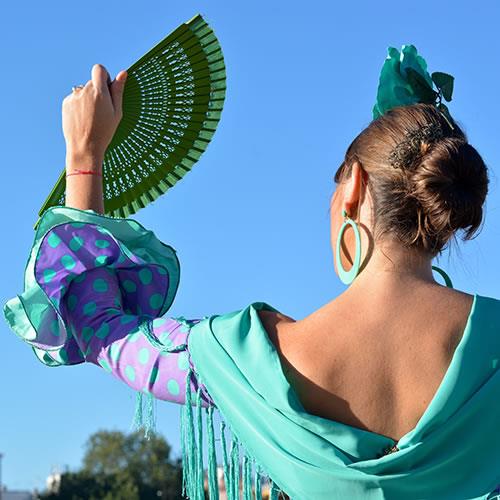SEVILLE - MUSEUMS



Whether you want to see ancient Roman ruins uncovered in nearby Itálica in the Archaeological Museum, ponder some of Spain`s most important paintings in the Fine Arts Museum, or take an up-close look at those shiny and impossibly tight outfits donned by bullfighters in the Bullfighting Museum, satisfy your curiosity with a visit to a few of Seville`s many museums!
Housed in the renovated Convento de la Merced, Seville`s magnificent Fine Arts Museum has occupied the building since 1839. The extensive complex of intertwining halls and beautiful courtyards from the 13th century former convent is now graced by priceless works of such greats as El Greco, Zurbarán, Velazquez, Valdés Leal and the great Sevillano painter Estebán Murillo. The fifteen spacious halls featuring pieces from the middle ages up through the 20th century have earned Seville`s Fine Arts Museum acclaim as Spain`s most important art gallery after the Prado in Madrid.
Constructed for the 1929 Ibero-American Exposition and facing the Provincial Archaeological Museum built for the same event, the stunning Mudejar-style building housing the Popular Arts and Customs Museum is tucked into the beautiful Parque de María Luisa. Traditional Andalucían music creates the atmosphere as you explore the lifestyles, musical instruments, dwellings, artisan trades, furniture, and clothing styles of traditional Andalucía. Perhaps the most impressive of the museum`s offerings is its varied collection of ceramics, which you can find on the bottom floor of the building.
Located in La Cartuja, the Expo `92 site; it was founded in 1399, the monastery was a favorite lodging place of Columbus, and in 1839 the complex was turned into a porcelain factory, which explains the kilns that stand incongruously by the buildings. It is the home of the superb Andalucian Contemporary Art Center, which has a collection of local modern art and frequent temporary exhibitions. It pays homage to a wide range of contemporary Andalucían artists. Owning an immense collection of 20th century artwork including pieces from such maestros as Daniel Vásquez Díaz, Guillermo Pérez Villalta, and Antonio Rodríguez de Luna, the museum delights art buffs and art novices alike with its constantly rotating exhibitions of paintings, sculptures, tapestries and ceramics.
One of the two museums situated in the lush Parque de María Luisa is the Provincial Archaeological Museum, an ode to Andalucía`s rich and diverse history. The charming Renaissance-style building, constructed as a pavilion for the 1929 Ibero-American Exposition, now houses an archaeological museum loaded with artifacts, mosaics, ruins, ceramics, sculptures and even sarcophagi dating back to between pre-history and the end of the Moorish era in Andalucía.



As one of Spain`s most important, famous and beautiful bullfighting venues, the grandiose La Maestranza bullring pays homage to the controversial sport and its history through the memorabilia housed in its Museo Taurino. The museum features old posters, photographs, paintings, mounted bull heads, scarlet-red capes, and of course the spectacular trajes de luces that the bullfighters wear.
Seville`s futuristic El Pabellón de la Navegación may have been overshadowed by the Metropol Parasol but this modern museum and exhibition space, which opened in January 2012, is just as thought-provoking. Its permanent collection is split into four parts – shipboard life, mariners, historical views of Seville and navigation.
The castle, which dated from Visigothic times, received its infamy in the annals of history in the year 1481 when it became a prison during the time of the Spanish Inquisition. Those who did not fit Catholic ideals were imprisoned and later murdered at the stake at the castle. The Inquisition left the castle in 1626, and by the nineteenth century, the castle was demolished to build a grain warehouse and food market, the Mercado de Triana, which is still open today. There is also a museum on the site of the old castle which tells the story of the people who suffered from religious oppression at the hands of the Inquisition.
Inspired by legendary Flamenco dancer Cristina Hoyos, the essence of flamenco and much more is present in Seville`s high-tech, interactive Flamenco Museum. The `scent` of Flamenco is also represented by scented woods representative of the cultures which have influenced Flamenco, such as India and the Caribbean. The displays are spread over three floors in an 18th century palace, with the interior patio hosting special events and dances. Exhibits include sketches, paintings, photos of flamenco greats, plus a collection of dresses and shawls. The museum also hosts classes, workshops and concerts regularly.
This house was built for a noble family in the sixteenth century and features a number of architectural styles, such as Renaissance, Moorish, Andalusian, and Plateresque. In 1901, it was bought by the Countess of Lebrija, who spent her own money to renovate the historic residence. She used the house as an exposition hall for her extensive collection of antiquities she acquired from her own travels and from her archaeologist friends. In 1999, the house became a public museum. The collection is spread out across two floors (27,000 square feet), with the second floor`s collection open to the public in guided tours only.
The Acuario de Sevilla opened to the public in September 2014, after a budget of €8 million was spent and 35 tanks acquired. Inside the aquarium, those 35 tanks house over 7,000 different sea mammals, fish, and reptiles. The exhibits in the aquarium follow Ferdinand Magellan`s 1519-22 circumnavigation of the globe. You will see 400 different species from southern Europe, North America, South America, and the Pacific Rim. There are also exhibits relating to keeping our oceans clean, and an interactive touching exhibit where visitors can get up-close with sea cucumbers and starfish, among other species.